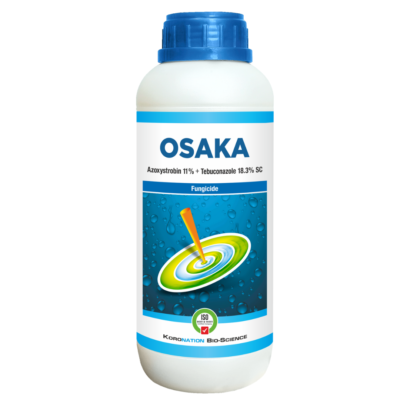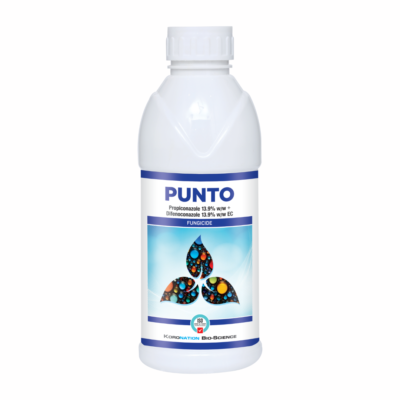Chemical Composition:
| S.No | Ingredient | Description | Weight |
| 1 | Hexaconzole a.i. content | 75.0 % w/w | |
| 2 | Sodium salt of poly carboxylic acid | 10.0 % w/w | |
| 3 | Sodium salt of alcohol ether sulfate | 2.0 % w/w | |
| 4 | Ethylene diamine tetra acetic acid sodium salt | 1.0 % w/w | |
| 5 | Silicon deformer | 0.5 % w/w | |
| 6 | Precipitated sillica | Q.S. % | |
| Total | 100 % w/w | ||
Recommendation
|
Crop(s) |
Common Name of Pest |
Dosage/HA |
Dilution in Water in water (liter) |
Waiting Period between last spray to harvest days |
Re-entry after each Application (In Hours) |
|
|
AI (gm) |
Formulation (gm) |
|||||
| Chilli | Leaf spot anthracnose, powdery mildew | 50 | 66.7 | 500 | 7 | – |
| Groundnut | Tikka leaf spot rust | 50 | 66.7 | 500 | 31 | – |
| Paddy | Sheath blight and Sheath rot | 50 | 66.7 | 500 | 30 | |
Direction of Use
1) Preparation of spray solution :- Take the required quantity of formulation dilute with little water and stair well using a stick. Then add the remaining quantity of water as per spray volume required and mix well again by stirring. 2) Plant protection equipment:- Use knapsack sprayer, foot sprayer, compression knapsack sprayer, compression knapsack battery sprayer of ASPEE-HTP sprayer. 3) Compatibility :- Hexaconazole 75% WG is compatible with most of the commonly used insecticides and fungicides. 4) Phytotoxicity:- Hexaconazol 75% WG is not phytotoxic when used as per recommendations. Warning :- (1) Not to be used on crops and pests other than mentioned on label and leaflets. (2) Not to be used for post harvest application. (3) Destroy container after use as directed on leaflet. (4) Caution :- The product is moderately toxic to fish and toxic to aquatic organism and thus may be avoided near aquaculture.
Time of Application
–
Precaution:
Protective clothing should be worn while mixing and spraying. Wash contaminated clothes and body part after application. Avoid inhalation, do not smoke, drink, eat & chew anything during application.
Symptoms Of Poisoning:
Nervousness, anxiety, tremor, convulsions and allergic manifestations.
First Aid
- If ingestion :- If person is conscious and alert, rinse mouth with water and give 1 or 2 glass of water to drink. Never give anything by mouth to an unconscious person. Call the doctor. Do not induce vomiting until and unless desired by attending physician.
- If inhaled :- Take the patient to fresh air and take care of body temperature. If patient is not breathing or breathing with difficulty, give artificial respiration preferably with mouth to mouth breathing. Consult a physician.
- In case of skin contact :- Wash with soap and plenty of water. If pain, redness or irritation persists, consult a doctor. All the contaminated clothes should be segregated and thoroughly washed with soap and water separately before use.
- In case of eye contact :- Rinse gently with plenty of water for at least 15 minutes. If pain, irritation, redness or photophobia persists, consult eye specialist.
Phytotoxicity
–
Antidote
If ingested give gastric lavage with care to prevent aspiration. Treat symptomatically.
Disposal Of Used Container
- Packages or surplus material and washing from the machines and containers shall be disposed of in a safe manner so as to prevent environmental or water pollution.
- The used package shall not be left outside to prevent their re-use.
- The package shall be broken and buried away from habitation.
- Dangerous to re-use empty container.
Storage Conditions
- The packages containing the fungicide shall be stored in separate rooms or premises away from the rooms or premises used for storing other articles particularly food article or shall be kept in separate almirahs under lock and key depending on the quantity and the nature of the fungicide.
- The store room should be well built, well lit, ventilated and sufficient in dimensions. The condition of the store should be dry and cool.







There are no reviews yet.